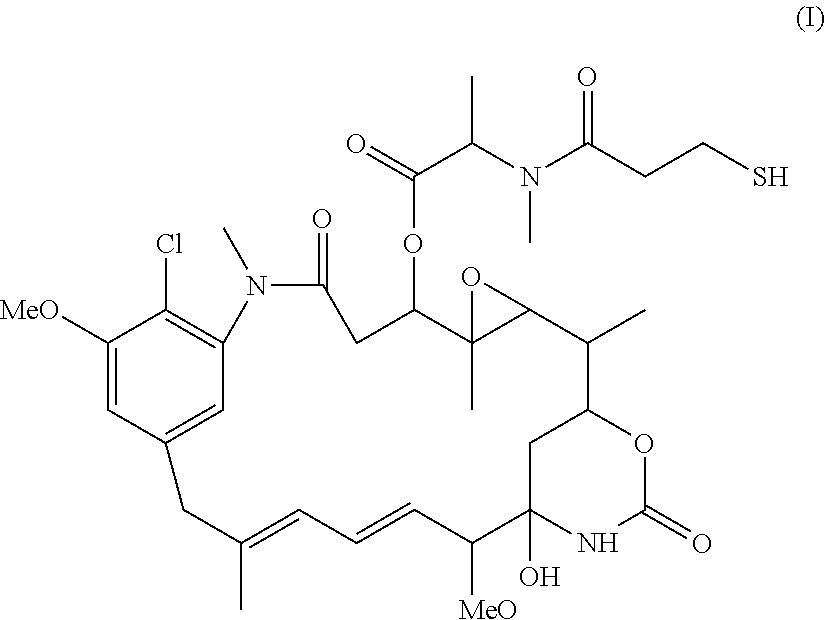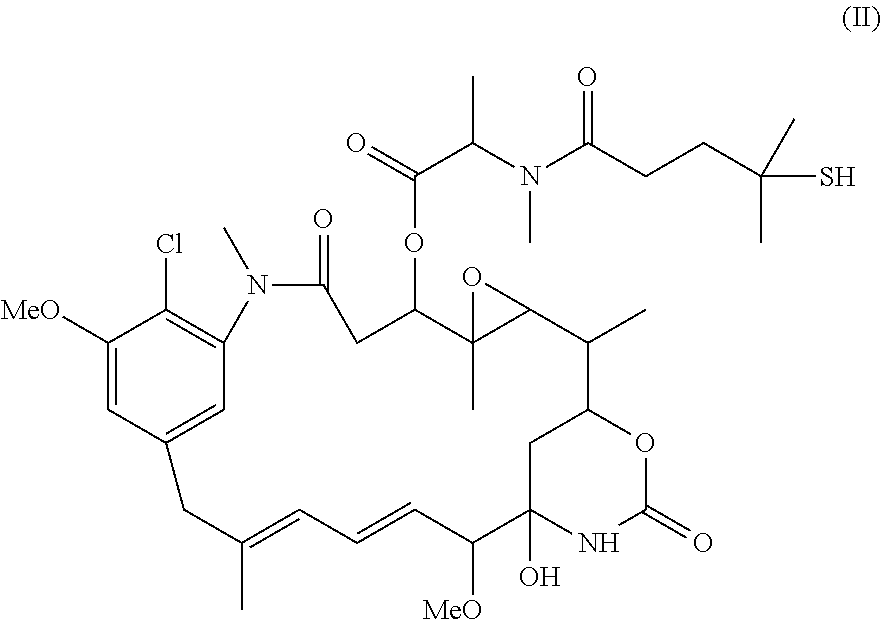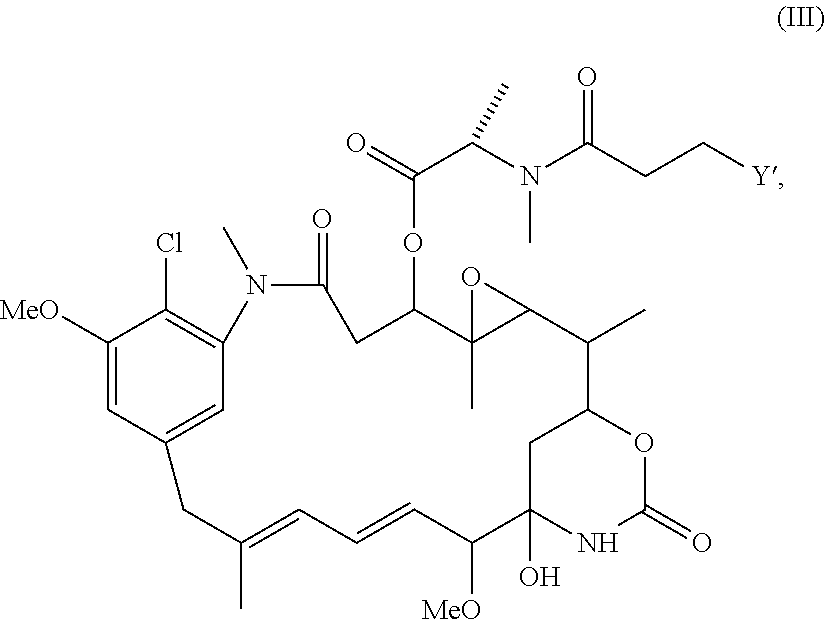Process for manufacturing conjugates of improved homogeneity
a technology of homogeneity and conjugates, applied in the field of process for manufacturing conjugates of improved homogeneity, can solve the problems of undesirable reaction products and particularly problematic reactions
- Summary
- Abstract
- Description
- Claims
- Application Information
AI Technical Summary
Benefits of technology
Problems solved by technology
Method used
Image
Examples
example 1
[0096]This example demonstrates a processes for manufacturing cell-binding agent-cytotoxic agent conjugates of improved homogeneity comprising performing the modification reaction at a lower temperature.
[0097]Humanized CD37-3 antibody (huCD37-3) was reacted with the heterobifunctional crosslinking reagent SMCC(N-succinimidyl-4-(maleimidomethyl)cyclohexanecarboxylate) and the maytansinoid DM1 using a previously described process, as well as the improved process that is the subject of the present application.
[0098]For the previously described process, Process A (see, e.g., Chari et al., U.S. Pat. No. 5,208,020), huCD37-3 (15 mg / mL) first was reacted with SMCC (6.0-fold molar excess relative to the amount of antibody, dissolved in DMA, dimethylacetamide) to form the modified antibody. The modification reaction was performed at 20° C. in 50 mM sodium phosphate buffer (pH 6.7) containing 2 mM EDTA (ethylenediaminetetraacetic acid) and 10% DMA for 180 minutes. The reaction was quenched wi...
example 2
[0109]This example demonstrates a processes for manufacturing cell-binding agent-cytotoxic agent conjugates of improved homogeneity comprising performing the modification reaction at a lower temperature and a higher pH.
[0110]A humanized antibody was reacted with the heterobifunctional crosslinking reagent SMCC and the maytansinoid DM1 to make a conjugate with a MAR (maytansinoid to antibody ratio, also known as drug to antibody ratio) of approximately 3.5.
[0111]The reaction was performed using a previously described process (see, e.g., U.S. Patent Application Publications 2011 / 0166319 and 2006 / 0182750), as well as the inventive process comprising performing the modification reaction at a higher pH and a lower temperature.
[0112]Using the previously described process, the humanized antibody (15 mg / mL) first was reacted with SMCC (7.5-fold molar excess relative to the amount of antibody) to form the modified antibody. The modification reaction was performed at 21° C. in 50 mM sodium ph...
example 3
[0117]This example illustrates a large-scale process for manufacturing cell-binding agent-cytotoxic agent conjugates of improved homogeneity comprising performing the modification reaction at a lower temperature and a higher pH.
[0118]A humanized antibody is reacted with the heterobifunctional crosslinking reagent SMCC and the maytansinoid DM1 to prepare a stable humanized antibody-SMCC-DM1 conjugate.
[0119]In particular, using the inventive process described herein, a humanized antibody is reacted with SMCC to form the modified antibody. The modification reaction is performed for 40 minutes using a molar excess of SMCC over antibody of 5.7 at about 10° C. in a buffer having a pH of about 7.8 in 50 mM sodium phosphate, 2 mM EDTA, with 7% (v / v) DMA. After modification, the pH of the reaction mixture is adjusted to 4.5 with 1 M acetic acid, and the modified antibody is purified using TFF. After purification, the modified antibody is reacted with the maytansinoid DM1 (about 1.2 fold mola...
PUM
| Property | Measurement | Unit |
|---|---|---|
| temperature | aaaaa | aaaaa |
| temperature | aaaaa | aaaaa |
| temperature | aaaaa | aaaaa |
Abstract
Description
Claims
Application Information
 Login to View More
Login to View More - R&D
- Intellectual Property
- Life Sciences
- Materials
- Tech Scout
- Unparalleled Data Quality
- Higher Quality Content
- 60% Fewer Hallucinations
Browse by: Latest US Patents, China's latest patents, Technical Efficacy Thesaurus, Application Domain, Technology Topic, Popular Technical Reports.
© 2025 PatSnap. All rights reserved.Legal|Privacy policy|Modern Slavery Act Transparency Statement|Sitemap|About US| Contact US: help@patsnap.com



